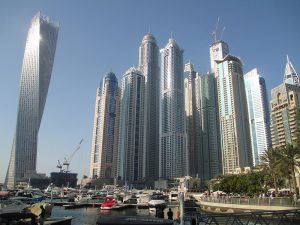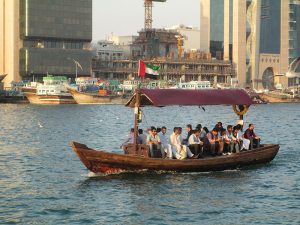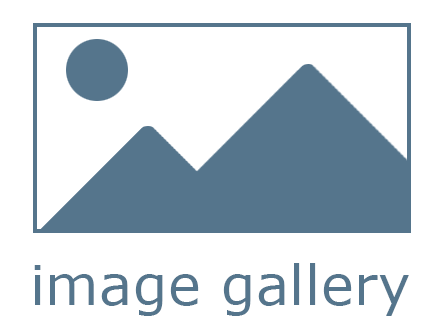 The small state of Dubai is one of the seven United Arab Emirates on the Persian Gulf. The country is largely desert, there are no lakes or rivers. In Dubai, the capital of the same name, a creek runs inland, to which traders settled in the nineteenth century. Dubai is now the largest port in the Middle East. Almost 3.5 million people live there. Only 15 percent of the total population are citizens of Dubai, the rest are temporary immigrants from Southeast Asia.
The small state of Dubai is one of the seven United Arab Emirates on the Persian Gulf. The country is largely desert, there are no lakes or rivers. In Dubai, the capital of the same name, a creek runs inland, to which traders settled in the nineteenth century. Dubai is now the largest port in the Middle East. Almost 3.5 million people live there. Only 15 percent of the total population are citizens of Dubai, the rest are temporary immigrants from Southeast Asia.
Clay tablets from Mesopotamia from 5,000 years ago already mentioned trade ships in the Gulf region. Traces of human activity have been found near Dubai: copper was melted here. Traditionally, the coastal area has been focused on long-distance trade: for example, Dilmun, present-day Bahrain, 500 kilometers northwest of Dubai, was a major stopover on the millennia old trade routes between Mesopotamia – present-day Kuwait and Iraq – and Pakistan, India and the African coast, and the island of Hormuz, near the Iranian coast and opposite Dubai, was a trading hub too. Pearls, dates and fish were exported from the Gulf regions; imported were gold, ivory, precious stones, ceramics, fragrant oil, grain and textiles. All kinds of sailing ships were built on the coast, dhows, which you can still see in the Middle East. Pearl fishing and the export of pearls remained the main economic activity until the twentieth century.
In the sixteenth and seventeenth centuries, Portuguese and Dutch ships came here to trade and fight each other. But they did not gain a foothold. In 1820, Britain established trade contacts with the Gulf States. In 1833, a large group of people settled in the still-empty Dubai, led by the Al Maktoum family – they became and still are the rulers of Dubai. Dubai grew strongly in the early twentieth century, as traders from Iran and Arab countries settled here. A prosperous period started; Dubai had the largest souks in the Arabian continent. During the economic crisis in the 1930s, the pearl trade collapsed, and the decline was exacerbated by the production of artificial pearls in Japan. In the 1960s, many people from India and Pakistan came to live in Dubai, they were active in the textile industry. Oil was found in Dubai in 1966: that meant a tipping point, the country quickly became very rich. Today, the oil industry accounts for only 8% of revenues; most money is earned through trade and tourism. A peculiar capitalist combination of an authoritarian, conservative, Arab family clan with Western multinationals took place in Dubai. In 1971, the Gulf States united to form the United Arab Emirates.

The importance of the port increased. Dubai creek was dredged, Port Rashid was opened in 1972, and expanded regularly in the years that followed. A smaller port was also built, the Al Hamriya Port, for fishing vessels and for trade with neighboring countries. In 1980, the port of Jebel Ali was completed, with a large industrial area where thousands of international companies settled. It is one of the ten largest container ports in the world.
In 1999, in the form of a sailing ship, the Burj Al-Arab was opened; the highest and most expensive hotel in the world. In 2008, the world’s tallest building was completed: the Burj Khalifa, 830 meters high. Artificial islands were built in the sea, in the form of the world atlas, and a group of islands in the form of the branches of a palm tree. Nothing is too crazy. In 2006 Dubai bought the time-honored, renowned British shipping company P & 0. It became part of DPWorld, one of the largest container companies in the world.
All those ports, hotels, skyscrapers and futuristic buildings are not built by the wealthy people of Dubai, but by an army of workers from India, Pakistan, Bangladesh, Indonesia and Nepal. They often live in barracks on the construction site, or elsewhere, from where they are picked up by vans. They have no rights and are not allowed in the super modern metro trains. Young women from these countries work for little money as maids and nannies.



